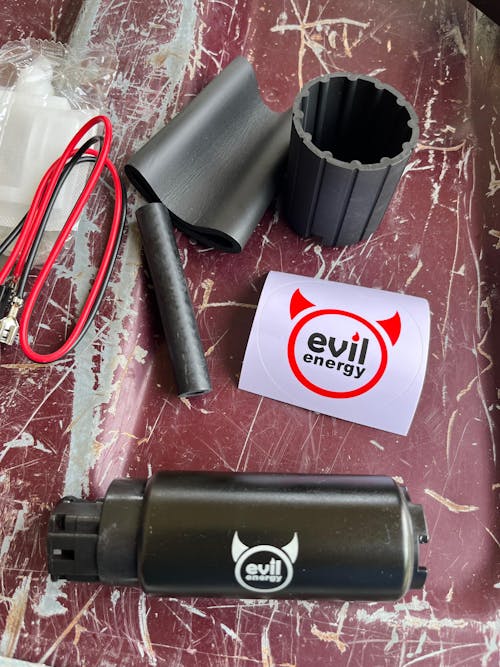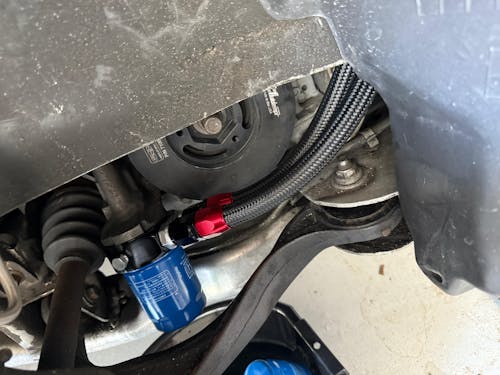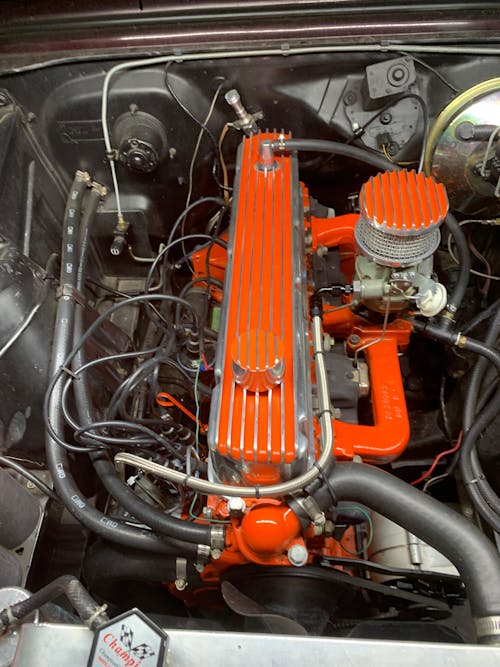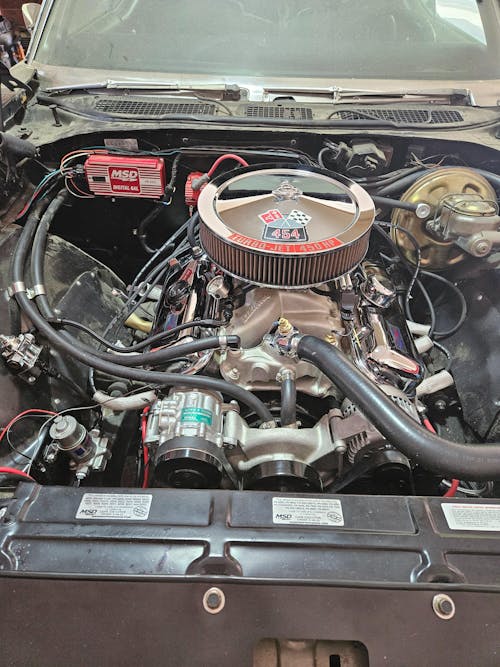Toyota Supra Cold Air Intake (MK4 & MK5): Street-Quiet, Track-Ready
A quality Toyota Supra cold air intake sharpens throttle response, stabilizes intake air temperature (IAT) to reduce heat soak, and adds a refined induction sound. Gains are modest on stock tune; pair with a tune/downpipe for bigger improvements. Choose CARB-EO options for California.
Why upgrade the intake on a Supra — Toyota Supra Cold Air Intake benefits
Daily drivability—not just dyno numbers—is where a Toyota Supra cold air intake shines. You’ll feel quicker tip-in, stronger mid-range, and more consistent IAT in traffic or back-to-back pulls. Compared with the factory airbox, a sealed or well-ducted Supra CAI mitigates heat soak, while a dry, reusable filter trims long-term costs and reduces MAF contamination risk.
You’ll notice:
-
Snappier response to city gaps and highway merges
-
Cooler, steadier IAT with proper shielding/ducting
-
Aggressive-but-civil sound—turbo spool (MK5) or induction roar (MK4) under throttle, quiet at cruise
-
Upgradeable foundation that scales with a tune, downpipe, and intercooler
MK4 vs MK5 — Toyota Supra Cold Air Intake guide
| Platform | Engine | What to prioritize | Compliance note |
|---|---|---|---|
| MK5 (A90/A91, 2020–2025) | B58 3.0T | Sealed/semi-sealed airbox, smooth MAF housing, direct cold-air duct | In CARB states, pick a CARB EO intake for street use |
| MK4 (1993–1998) | 2JZ-GTE / 2JZ-GE | Heat shielding, filter placement away from radiant heat, and fresh-air pickup | CARB legality varies—verify EO before purchase |
CARB tip: If you daily drive in California or other CARB states, use a CARB EO intake (with an Executive Order number) to remain emissions-legal on public roads.
Supra CAI vs Stock (what you actually feel)
Most owners report the biggest real-world wins in response and temperature stability. Peak horsepower gains on a stock tune are modest; the intake shines when stacked with a tune + downpipe.
| Dimension | Stock Airbox | Quality Supra CAI |
|---|---|---|
| Throttle response | Gentle/filtered | Quicker tip-in, stronger mid-range |
| IAT & heat soak | IAT climbs in traffic/heat | Shielded/ducted path tempers heat rise |
| Sound | Very quiet | Turbo/induction tone under load; calm at cruise |
| Upkeep | Paper filter | Dry, reusable filter = lower lifetime cost |
| Tuning headroom | Limited | Removes inlet bottleneck for tuned setups |
Power reality:
-
Stock tune: noticeable response; small peak hp change.
-
With tune + downpipe: larger, repeatable gains; CAI helps maintain stable trims and keeps IAT rise in check over repeated pulls.
Picking the right intake: MK5 vs MK4 cues
MK5 (B58)
-
Look for sealed or semi-sealed airbox, smooth MAF housing, and direct cold-air feed.
-
If you plan a tune, ensure your intake brand has stable MAF calibrations (no idle trims or CEL).
MK4 (2JZ-GTE/GE)
-
Favor heat shields and smart filter placement; engine bay radiates a lot of heat.
-
For high boost or road course days, pair with better ducting or a cool air pickup.
Install overview (DIY-friendly, 45–90 minutes)
Tools: 10/12/13 mm sockets, screwdrivers, pliers, torque wrench (recommended), clean rag.
Pro tips:
-
Fully seat couplers and torque clamps evenly.
-
Keep any MAF/IAT sensor in the factory orientation to avoid trim drift.
-
After installation, allow ECU adaptation (50–100 miles) or perform a battery reset.
Steps (condensed):
-
Remove engine cover and stock box/tube.
-
Transfer sensors (maintain OE clocking) and mounts.
-
Install heat shield/airbox and brackets; verify hose/wiring clearance.
-
Fit intake tube & filter; ensure spacing from hot/moving parts.
-
Tighten to spec, start the car, check idle/CEL; short road test.
-
Re-check clamp torque after a full heat-cycle.
Maintenance & ownership (street, track, and weather)
-
Dry filter cleaning: every 10–15k miles (street) or 5–8k miles (track/dust).
-
Inspect clamps, seals, and brackets at each oil change.
-
Keep a pre-filter sock for heavy rain or dusty road trips.
-
For ethanol builds or lines upgrade, see: PTFE fuel line hose / 6AN PTFE fuel line / 8AN PTFE fuel line / 10AN PTFE fuel line。
Tuning combos (where a CAI pays off)
-
MK5 B58: CAI + stage-1/2 tune + downpipe = major mid/top-end improvement; better IAT control over repeated pulls.
-
MK4 2JZ-GTE: CAI + front-mount intercooler + boost control scales power reliably; intake prevents inlet restriction at higher mass flow.
Track day & daily-driver checklist
-
Sharper response for city, canyon, and back-to-back pulls
-
Cooler, more consistent IAT; less heat soak fatigue
-
Dry, reusable filter reduces lifetime costs
-
45–90-minute DIY installation, fully reversible
-
CARB-EO option for emissions-legal street use in CARB states
FAQs (Supra owners’ top questions)
Will a Supra CAI add horsepower? On a stock tune, expect modest peak gains but clearly better throttle response. Stacking a tune + downpipe makes the change more measurable.
Is it loud? You’ll hear more turbo spool (MK5) or induction roar (MK4) under throttle; cruise remains civil with a sealed/heat-shielded design.
Do I need a tune after installing it? Not required for most intakes. A tune maximizes benefits and keeps trims/CELs in check when you add other bolt-ons.
Is it legal in California? Choose an intake with a CARB Executive Order (EO) for emissions-legal use in CARB states. Non-EO intakes are typically 'race/off-road only.'
Any water or heat concerns? Use a heat shield or airbox to limit radiant heat, and consider a pre-filter sock in heavy rain. Avoid directing water spray at the inlet.
Related Content
-
Learning center: Fuel cell gas tank guide
-
Tech guide: CARB EO intake guide for street use
-
Product hub: PTFE fuel line hose, 6AN/8AN/10AN PTFE kits


![[20FT] EVIL ENERGY PTFE Fuel Line Kit, complete black hose & fittings set, 180-day return](http://www.ievilenergy.com/cdn/shop/files/Test-2025-Evilenergy-125598065_165x.png?v=1742144807)
![[16FT] EVIL ENERGY PTFE Fuel Line Kit, black braided hose, fittings, free shipping & return](http://www.ievilenergy.com/cdn/shop/files/Test-2025-Evilenergy-125598171_165x.png?v=1742144807)
![CPE Fuel Line[25FT]](http://www.ievilenergy.com/cdn/shop/files/25FTCPE_FuelLine_165x.png?v=1735220649)
![CPE Fuel Line[20FT]](http://www.ievilenergy.com/cdn/shop/files/20FTCPE_FuelLine_165x.png?v=1735220649)
















